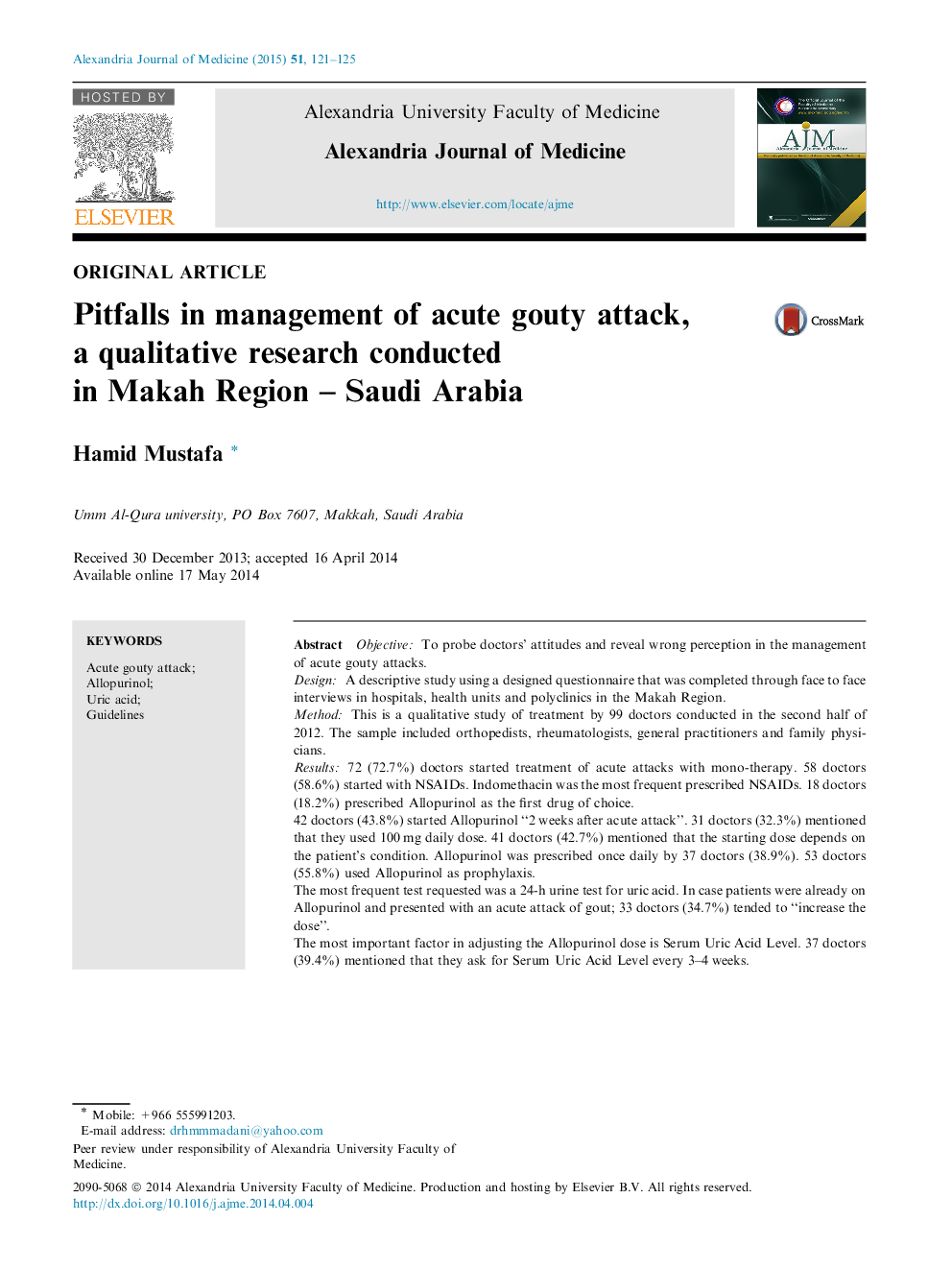| Article ID | Journal | Published Year | Pages | File Type |
|---|---|---|---|---|
| 3431637 | Alexandria Journal of Medicine | 2015 | 5 Pages |
ObjectiveTo probe doctors’ attitudes and reveal wrong perception in the management of acute gouty attacks.DesignA descriptive study using a designed questionnaire that was completed through face to face interviews in hospitals, health units and polyclinics in the Makah Region.MethodThis is a qualitative study of treatment by 99 doctors conducted in the second half of 2012. The sample included orthopedists, rheumatologists, general practitioners and family physicians.Results72 (72.7%) doctors started treatment of acute attacks with mono-therapy. 58 doctors (58.6%) started with NSAIDs. Indomethacin was the most frequent prescribed NSAIDs. 18 doctors (18.2%) prescribed Allopurinol as the first drug of choice.42 doctors (43.8%) started Allopurinol “2 weeks after acute attack”. 31 doctors (32.3%) mentioned that they used 100 mg daily dose. 41 doctors (42.7%) mentioned that the starting dose depends on the patient’s condition. Allopurinol was prescribed once daily by 37 doctors (38.9%). 53 doctors (55.8%) used Allopurinol as prophylaxis.The most frequent test requested was a 24-h urine test for uric acid. In case patients were already on Allopurinol and presented with an acute attack of gout; 33 doctors (34.7%) tended to “increase the dose”.The most important factor in adjusting the Allopurinol dose is Serum Uric Acid Level. 37 doctors (39.4%) mentioned that they ask for Serum Uric Acid Level every 3–4 weeks.ConclusionThere were common pitfalls that need a training program to increase awareness of doctors with general guidelines and recommendations. The most critical pitfalls include prescribing Allopurinol in acute gouty attacks and ignoring the Renal Function Test.
